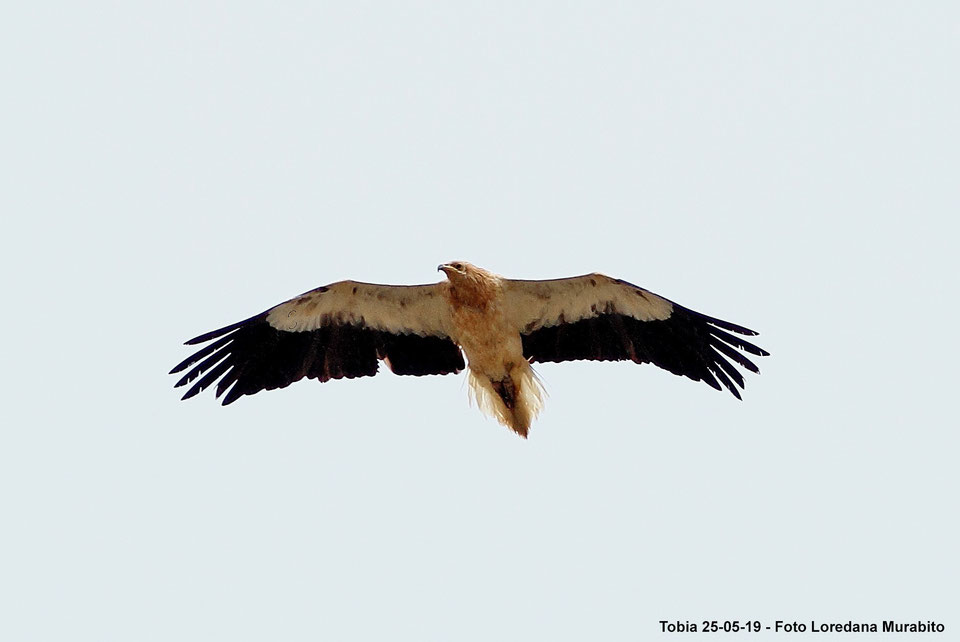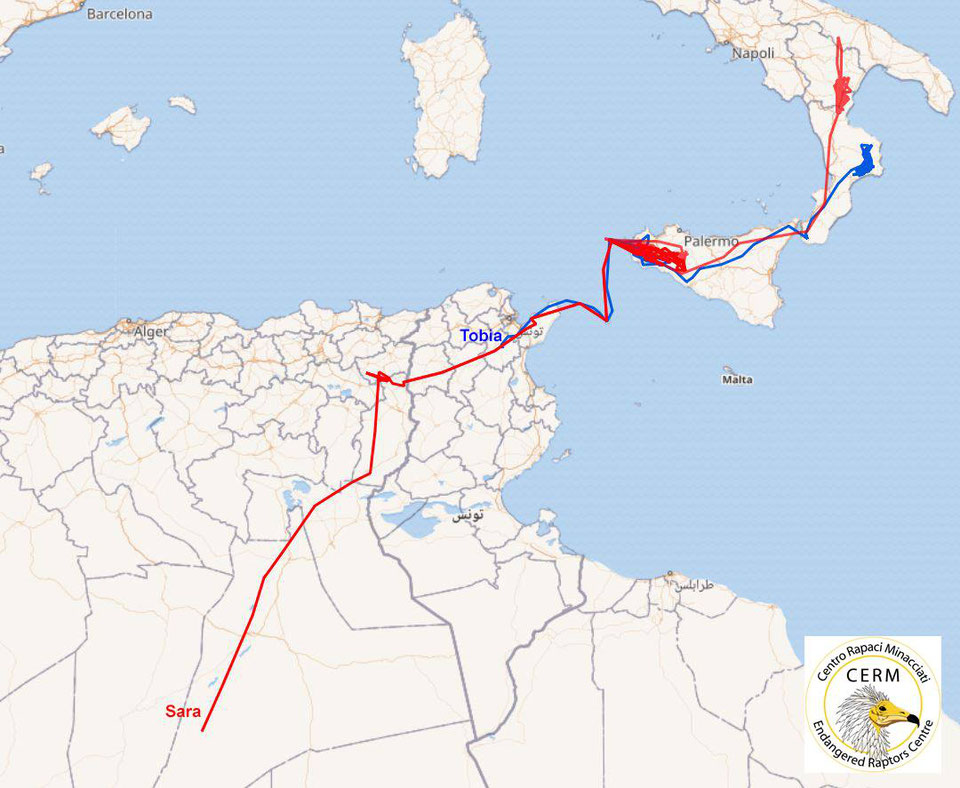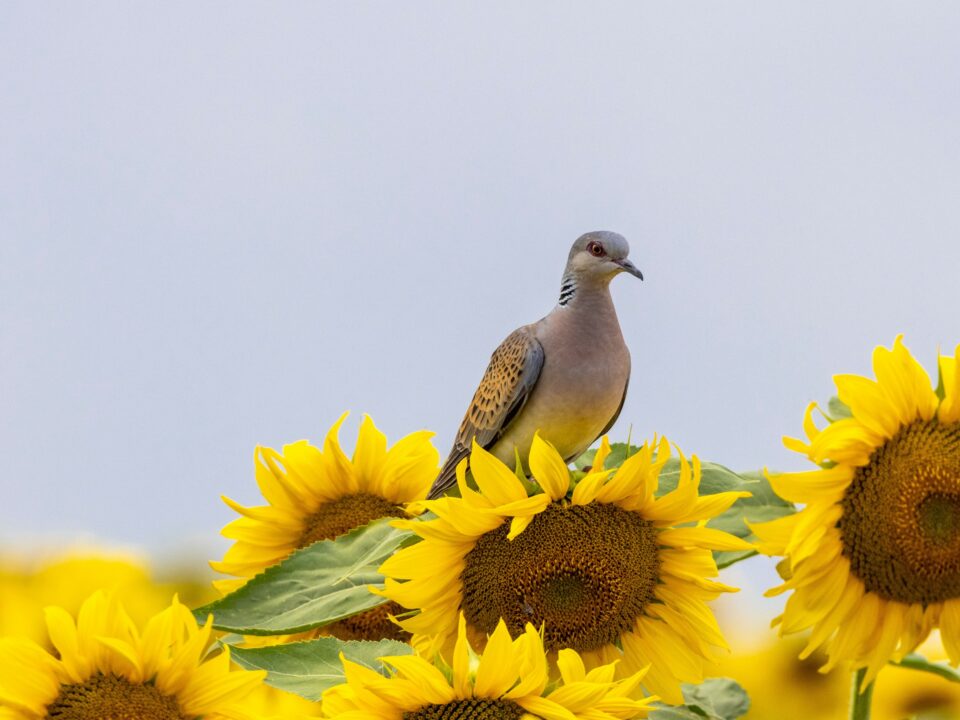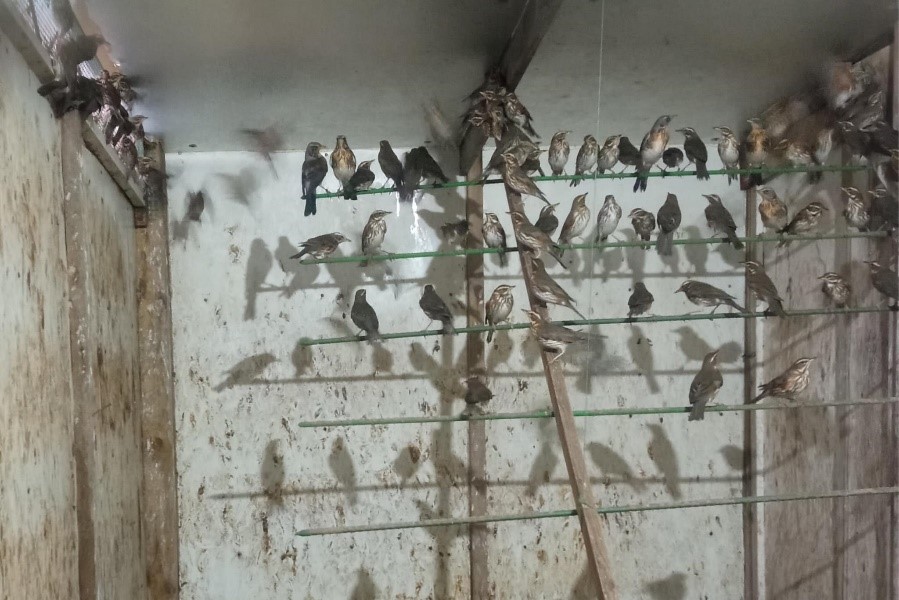
Tobia, VCF ©Loredana Murabito
Update – Egyptian vultures Sara & Tobia reach African skies!
Have you ever had to wait for a delayed flight? What’s the longest time you’ve waited? During her epic migration journey, the Egyptian vulture Sara had to spend an entire month in Sicily waiting for favourable winds to cross the Sicilian Strait. She did not embark on this adventure alone, however: her travel companion Tobia soared by her side in the skies of Trapani.
On September 7th, Sara finally flew away, heading for Cape Bon in Tunisia. Little did she know, her journey would face yet another twist: due to unfavourable winds, she ended up having to arrange a stopover on the volcanic island of Pantelleria. She arrived there well before sunset at 5 p.m., after having flown 130 km over the sea, at a speed of only 21 km/h. That’s still one half marathon per hour – not bad!
After a good night’s sleep, Sara left shortly after sunrise at 8 a.m. on the following day. Soaring another 82 km over the Mediterranean at an average speed of only 14 km/h, she landed in Cape Bon, a peninsula in north-eastern Tunisia, at 1.30 p.m.
For an Egyptian vulture, 14 km/h is remarkably slow: they usually make this journey at an average speed of 40 km/h. This very low speed is revealing: it shows that Sara had a particularly hard time completing her journey.

Sara’s travel companion, Tobia, was last spotted in Tunisia, but hasn’t been sending any signals since last week.
Nothing to worry about, though: this is normal, since his GPS uses telephone antennas, which are very rare in the area. We hope we’ll hear from him again soon, and that he is travelling safely to his wintering spot in Niger.
Sara (who has a different type of tracking device), has left Tunisia already, and has flown a daunting 740 km deep into the Sahara desert. It’s not even over: she still needs to fly another 1,500 km to reach her winter retreat in Niger. Where exactly are Sara and Tobia now?
Read the update by the Vulture Conservation Foundation, to find out.
The European population of Egyptian vultures has fallen by up to 50% in the last 50 years, and without your help, these magnificent birds will soon go extinct. Donate now



